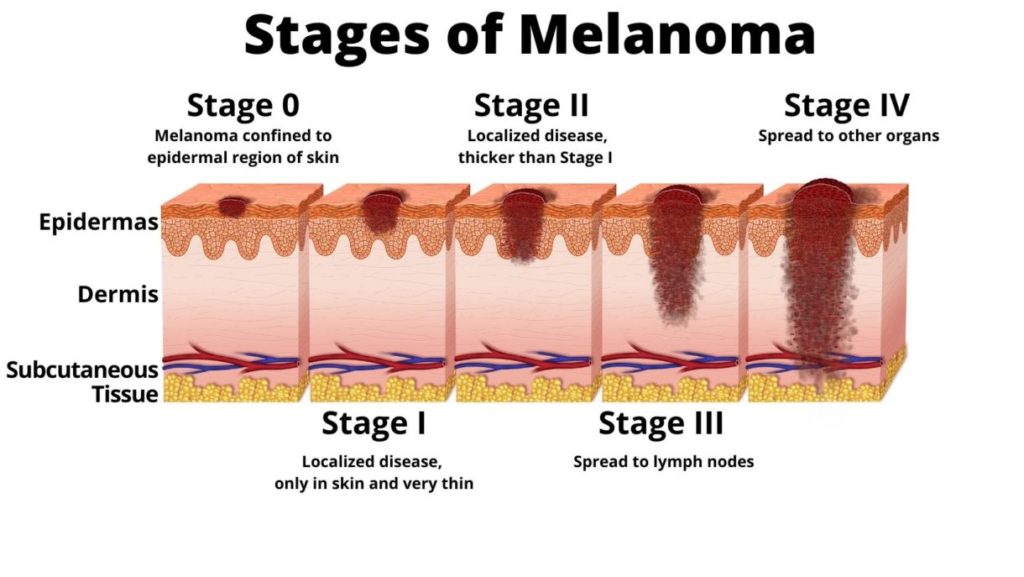Leave a Comment:
7 comments
I noticed that’s spots on my skin , I’ve been waiting for months to see a doctor unfortunately , im positive this what I have from the pictures . I’m scared yet I’ve come to understand what I’m going through and everyday now I just take it easy and enjoy the rest. Maybe I’ll get the help I need but if i don’t then at least I try to live the best I can with what i have left. ☹️ thank you for sharing. It help me calm myself and accept my reality.
ReplyHi Odila-
I too have lots of spots on my skin. The thing to do is have a dermatologist examine them. No sense in worrying until you’ve had a check-up.
Hang in there,
David Emerson
ReplyI had a growth on my leg that was determined to be keratoacanthoma. A dermatologist cut it out and sent it to pathology. I haven’t received the pathology report myself yet. The dermatologist wants me to get a shot of 5FU instead of Mohs surgery. His comment was he didn’t want it to bite me 10 years down the road. I’m 75 and not sure I’ll be alive 10 years from now. If it isn’t SCC, should I have the 5FU or should I leave it alone? If it is SCC, then what? Thanks for a reply.
ReplyHi Sue-
Let me ask you a few questions before we settle on your next steps.
1) When you say that your dermatologist “cut it out” are you saying that he/she removed the entire KC? If so the pathologist should be able to make a complete report. A report that you should be able to use to make better decisions.
2) Ask you can read from the bold face below, your decision-making may be influenced by a) KC or SCC b) specific diagnosis based on “the entire structure”
Finally, your instincts are accurate. 5-FU is chemotherapy and chemotherapy can mean collateral damage. It is difficult for any 75 year old to worry too much about the 10 year picture.
How do you feel about emailing me again once you receive the pathologist’s report?
thanks
David Emerson
ReplyHey David Emerson, i think it was the fine questions that i have ever seen. These questions in my mind but i have found you that you have already asked them very well written, even if i wanna quote those questions again i will , but i did not see to do this now! I am also looking for the answer, the links did not help me!
ReplyDavid, I’m john, have surgery last Feb 2017 for the removal of laryngeal mass Squamous Cell Carcinoma of the gnostic, stage two. Surgeon left a small CA during the 1St surgery. The mass that was left is to be removed try surgery for the second time. Followed by radiation. Is bitter melon helps in Squamous Cell Carcinoma of the larynx? I’m juicing it and drinking the extract everyday. Please comment to this. Thanks a lot
ReplyHi John-
I am sorry to read of your laryngeal SCC. It sounds like you have therapy lined up that you are comfortable with. If I understand you correctly, you are wondering about either integrative therapies or complementary therapies to both enhance your surgery and radiation as well as therapies to increase your chances of a successful outcome.
If you are going to undergo more surgery, please consider “pre-habilitating.” Get in shape for your surgery. Eat right, exercise, get plenty of rest, etc. Basically get in shape for your second surgery. Your body will respond more favorably to the surgery. You will heal and recover better and faster according to studies.
Re your question about bitter melon, yes, research shows that bitter melon kills your cancer.
Further, consider supplementing with curcumin.
Finally, before you begin radiation therapy consider supplementing with resveritrol to enhance the efficacy of radiation while reducing collateral damage.
If you are interested I can send you the links to Amazon to the brands that I take of the supplements above as well as the doses. This is up to you.
Good luck
David Emerson
Reply

